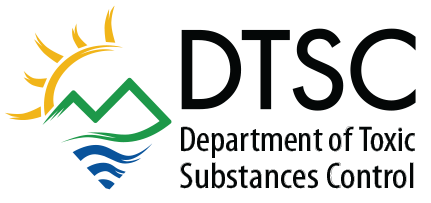Human and Ecological Risk Office
Human and Ecological Risk Office Overview
The Human and Ecological Risk Office (HERO) provides DTSC program staff with world-class technical assistance and training on toxicity of chemicals and the health risks of chemicals to human and ecological receptors. HERO staff also deliver research presentations on human health risk assessments and ecological health risk assessments at local, national and international professional society conferences. The HERO sections listed below can be accessed with the adjacent HERO Links.
Human Health Risk Assessment
Human health risk assessment involves examining issues related to specific contaminants, including environmental fate and transport, determining if sampling is sufficient to characterize contaminants and assessing the exposure of human receptors. In addition, the toxicity parameters of contaminants are evaluated to make sure that the latest scientific knowledge is used in evaluating potential toxicity. These evaluations are based on sound scientific knowledge and fact, and comply with Department and U.S. EPA risk assessment guidance, and policy. At sites involving remedial action, the risk assessment is used to determine the nature and extent of remedial activities, such as establishing preliminary cleanup goals and ensuring that contaminants remaining do not pose a risk to human health.
Ecological Risk Assessment

Endangered Ridgways Rail eating a Yellow Shore Crab at a DTSC Cleanup Site. Photo from Dr. Michael Eichelberger
Ecological Risk Assessment considers the potential adverse effects of chemicals on the biological communities. There are more species native to California than any other area in North America of equal size. Among animals as a whole (including insects and other invertebrates), at least 50 percent of the species and sub-species are found only in California. DTSC is the designated co-trustee for natural resources, along with the California Department of Fish and Wildlife, under the Comprehensive Environmental Response, Compensation and Liability Act (Superfund).
DTSC and HERO operate in cooperation with other regulatory agencies and trustees to advise, review and approve investigations regarding natural resources. HERO eco-toxicologists focus on the protection of numerous habitats, from wetlands and coastal areas to the high desert HERO’s objective is to protect the state’s ecological resources by promoting well-designed and well-executed ecological risk assessments. HERO eco-toxicologists have been at the forefront, first by issuing “Guidance for Ecological Risk Assessment at Hazardous Waste Sites and Permitted Facilities (1996) and second by continual updates to guidance in the form of “EcoNOTEs”.
Evaluation of Contaminant Health Risks at Military Base Sites
The Federal Facilities Section of HERO works closely with the department’s Office of Military Facilities to oversee toxicology and risk assessment at current and former defense facilities in California. Each base may have several hundred individual toxic waste release sites, often with a complex mixture of toxic chemicals in soil and groundwater. These sites also present a multifaceted regulatory environment involving State, Federal and local re-use agencies. HERO toxicologists play a key role, translating between the different risk assessment, risk management and regulatory cultures. HERO’s eco-toxicologists are also important players in military cleanups since the bases contain large areas of open habitat; much of it in fragile coastal or desert environments.
Evaluation of Contaminant Health Risks at School, Residential, Industrial and Recreational/Open Space Sites in California
The Northern California, Central California and Southern California Sections of HERO provide site characterization, fate and transport modeling, as well as, site-specific exposure and health risk assessments for school, residential, industrial, recreational and open space sites in California. HERO’s objective is to ensure that contaminants are accurately characterized, health risks are accurately estimated, and any residual contamination does not pose a risk to human and ecological health.
HERO provides site-specific exposure and health risk assessments at proposed and existing schools in California to ensure protection of some of the state’s most sensitive populations. HERO toxicologists provide assistance to DTSC School Evaluation Units on the development of guidance and scientific procedures for assessing the health risks of contaminants at school properties. HERO toxicologists communicate their findings on the health risks of contaminants at school sites and at school site cleanups to DTSC School Evaluation Units, as well as directly to the public, both in written materials and at community meetings.
Safer Consumer Products

Safer Consumer Products: HERO Toxicologist Dr. Eric Sciullo presenting DTSC’s Proposal to List Toluene in Nail Products as a Priority Product
The DTSC Safer Consumer Products Program works to identify toxic chemicals in consumer products and propose product-chemical combinations for which safer alternatives must be evaluated. HERO toxicologists are involved in the evaluation of the toxicity of chemicals and alternatives in consumer products. This includes evaluating the hazard and cancer risk of chemicals to humans and to the environment. For more information go to the DTSC Safer Consumer Products Web Page.
GIS and Risk Communication
HERO scientific staff provide DTSC with Geographic Information Systems analytical and visual materials for public presentations. Three dimensional contaminate plume models are developed that incorporate aerial photographs and satellite imagery. Using regional data, we are able to combine site related environmental data with demographic and socio-economic data to better understand and communicate cumulative risk within limited geographic areas.
Page last revised March 29, 2019
HERO Links
HERO Quick Links
Site Mitigation & Restoration Program Links
- Brownfields
- Cleanup in Vulnerable Communities Initiative (CVCI)
- EnviroStor
- Exide
- Human and Ecological Risk Office
- Lead-Acid Battery Recycling Facility Investigation and Cleanup Program
- Loans & Grants
- Land Use Restriction Sites
- Santa Susana Field Laboratory
- School Sites
- Sea Level Rise
- State Superfund Program
- Strategic Plan and Program Enhancement Work Plan
- Vapor Intrusion
- Contact Information
Site Mitigation & Restoration Program Related Links
Connect / Contact Us
Office Locations / Map
Sign up for an E-List
Regulatory Assistance Officers
Statewide Campaigns/Alerts
Report an Environmental Concern
Amber Alert
California Grants Portal
Register to Vote
Save Our Water.com



 Katherine M. Butler, MPH
Katherine M. Butler, MPH